Casting Optimization for Marine Aluminum Bronze Globe Valves
The marine right-angle globe valve body, made from aluminum bronze ZCuAl9Mn2, must endure a water pressure test of 4.0 MPa. This paper examines the casting properties of aluminum bronze ZCuAl9Mn2. Pilot production of aluminum bronze valve body components faced significant challenges due to the lack of standardized process models. During the initial production phase, the entire batch failed the water pressure test due to leakage. Despite process improvements, subsequent batches continued to fail the water pressure test because of leakage. Through ongoing optimization of the casting process, the leakage issue was mitigated, enabling the consistent production of high-quality batches of right-angle globe valve bodies.
The primary function of a globe valve is to control the flow of fluids in pipelines by opening or closing the valve. Globe valves are widely used in pipelines across various industries, including marine, petroleum, boiler systems, chemical processing, power generation, pharmaceuticals, fertilizers, and HVAC systems. A right-angle globe valve is characterized by a 90-degree angle between its inlet and outlet flow paths. Marine right-angle globe valves are designed for use in seawater applications, including submersible equipment, and must meet stringent spring pressure requirements. Aluminum bronze ZCuAl9Mn2 is widely preferred for its exceptional corrosion resistance and strength. The technical specifications mandate a 4.0 MPa water pressure test for 5 minutes, with no leakage permitted. This paper discusses the optimization of the casting process for marine aluminum bronze right-angle globe valve bodies to achieve high-quality castings that meet strict requirements.
Table 1 presents the chemical composition and mechanical properties of ZCuAl9Mn2.
Cast aluminum bronze exhibits laminar solidification characteristics, which makes it susceptible to the formation of concentrated shrinkage cavities. Molten aluminum bronze is also prone to the development of primary oxidation inclusions during smelting, followed by secondary oxidation inclusions during pouring. To mitigate these challenges, it is crucial to maintain a steady rise of the alloy liquid during the filling process. Key process design considerations include utilizing a pouring system with a filter screen that initially remains closed and opens later. This approach helps minimize secondary oxidation inclusions during pouring, ensures a consistent rise of the alloy liquid in the cavity without splashing or eddy currents, and preserves the oxide film on the cavity's free surface. Additionally, an open sand mold with a large riser is used to reduce resistance to the rising alloy liquid and enhance the effect of atmospheric pressure on the riser. To promote solidification, thicker casting sections are chilled using cold iron.
Figure 1 illustrates the right-angle globe valve body. While the valve body may appear simple, resembling a combination of a disc and a T-shaped sleeve, it presents significant challenges in casting technology. In terms of shrinkage compensation, the flange of the valve body has a thickness of 32 mm, while the adjacent straight pipe wall is 18 mm thick. Insufficient compensation can lead to cracks at their intersection. In a vertical pouring scheme, the T-shaped sleeve, with a height of 265 mm, produces a height-to-wall-thickness ratio of 14.7 (265 mm/18 mm), which is below the threshold of 17. This ensures that the shrinkage feeding channel remains unobstructed, allowing for effective feeding.
For demolding, dividing the mold along the plane shown in Figure 1 facilitates the easy removal of the wooden mold from the cavity. In terms of pouring positions, aluminum bronze’s tendency to form oxidation inclusions requires adjustments based on the casting shape. For instance, flanges (plate castings) should be positioned horizontally with bottom pouring, allowing the molten alloy to rise steadily. This enables oxidation inclusions to float to the plate’s surface and exit through the riser. Cylinders (sleeve castings) should be positioned upright with bottom pouring to ensure a steady rise of the molten alloy, allowing oxidation inclusions to float to the top of the sleeve and exit through the riser. According to the “Manual,” the alloy liquid should rise steadily in the cavity without splashing or forming eddy currents, maintaining the oxide film on its surface. While this is achievable for plate and sleeve castings, it is more challenging for valve body castings.
The primary challenge in casting aluminum bronze valve bodies lies in controlling oxide inclusions, which are the main cause of leakage during water pressure tests. There is no specific manual or material guidance available for casting this aluminum bronze right-angle globe valve body. Improvements can only be achieved through observation and trial and error. The author consulted with a company specializing in marine copper alloy valve bodies, which also relies on trial and error methods to optimize the casting of aluminum bronze valve bodies.
Table 1 Chemical composition and mechanical properties of the ZCuA19Mn2
|
Chemical Composition (%) |
Room Temperature Mechanical Properties (Sand Casting) |
|||||
|
Al |
Mn |
Cu |
Tensile strength Rm/MPa |
Yield strength Rp0.2/MPa |
Elongation A/% |
Brinell hardness HB |
|
8 to 10 |
1.5 to 2.5 |
The rest |
390 |
150 |
20 |
85 |
A horizontal pouring scheme was adopted to ease the removal of the wooden mold from the cavity, with the midsection of the two symmetrical halves serving as the parting surface (Figure 2). A 3 mm machining allowance was applied to the machined surfaces, with shrinkage rates of 1.5% for the outer mold and 0.5% for the core box. A circular riser (70 mm × 130 mm) was positioned adjacent to the flange, and additional risers (60 mm × 130 mm each) were placed at both ends of the T-shaped cylinder.
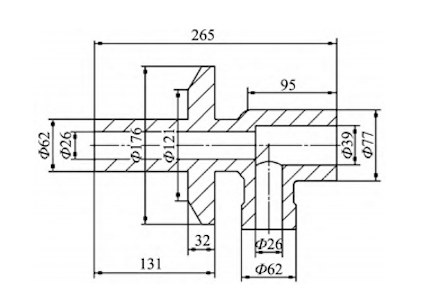
Figure 1 The size of the globe valve body casting
A central pouring system was employed, featuring a straight runner with a diameter of 30 mm. The alloy liquid flowed through a sand filter with a slag bag containing 23 holes (4 mm in diameter each), while side risers compensated for the flange and T-shaped cylinder. Solidification simulation analysis confirmed the adequacy of the process plan and ensured proper solidification compensation.
Clay sand dry molds and cores were used, dried at temperatures between 400°C and 430°C. Before pouring, a vacuum gas content test device measured the gas content in the alloy liquid prior to being poured into the furnace. The sample was placed in a vacuum tank, where the pressure was reduced from 1 atmosphere to 0.1 atmosphere. A concave upper surface with a central tear (Figure 3) indicated successful gas content test results. Conversely, a flat or convex surface signaled excessive gas content, necessitating the use of refining agents or argon purging for degassing. In the initial test, the sample displayed a concave surface with a central tear, confirming that the alloy met the gas content requirements. The globe valve body weighed 9 kg, while the total casting weight was 20 kg, resulting in a process efficiency of 45%. During the first production batch, all six products failed the water pressure test due to leakage.
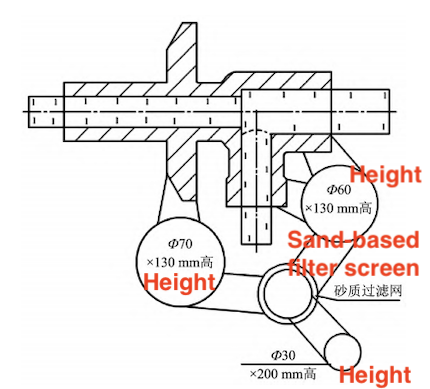
Figure 2 The casting process of the globe valve body trial production plan
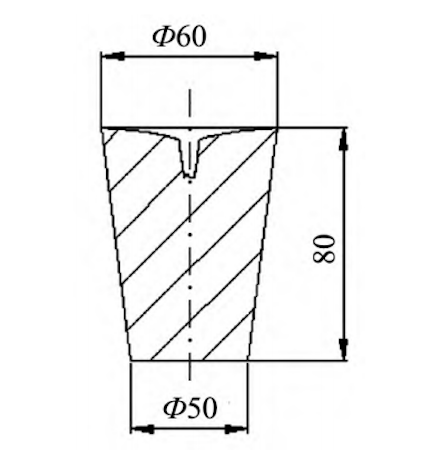
Figure 3 The vacuum sample dent detection
During the initial production of the valve body, all components failed the water pressure test due to leakage. However, shrinkage cracks, insufficient filling, and porosity were not observed. Leakage was caused by primary oxidation inclusions in the alloy liquid and secondary inclusions that formed within the cavity, trapping them in the casting and creating leakage pathways under pump pressure. Although the cause was clear and the objective was set, addressing the issue was challenging due to the unpredictable distribution of oxidation inclusions within the cavity. To resolve this, the following improvements were implemented:
- The central pouring system was replaced with a bottom pouring system, and a pouring gate was introduced at the base of the flange. Although turbulence within the valve body cavity could not be completely eliminated, this adjustment stabilized the alloy liquid level during filling, reducing secondary oxidation.
- A graphite chiller, consisting of two half-circles 16 mm thick, was applied to the small circular section of the flange’s conical side to promote a denser surface layer during solidification.
- A 100 mm × 32 mm × 120 mm riser was added to the upper flange, replacing the two original round risers.
- Chromite sand (50–100 mesh particle size, 4% kaolin, and 4% bentonite) was used to improve the chilling effect. It was applied to the core sand and molding surface, with clay sand retained as the backing material. However, the chilling effect of chromite sand was limited.
Figure 4 shows the improved casting process. The original sand filter was retained, with no changes made to the mold and core drying process or the pouring temperature. During the process test, a vacuum gas content test confirmed the alloy liquid's quality, with the sample showing a concave surface and a central tear forming holes. The globe valve body casting weighed 9 kg, while the total pouring weight was 17 kg, yielding a process efficiency of 53%. Despite these improvements, all six products failed the pump pressure test due to leakage. This case highlights that solidification simulation software ensures shrinkage compensation, while gas content tests confirm the absence of gas slag. However, the primary challenge remains controlling oxidation inclusions in the casting.
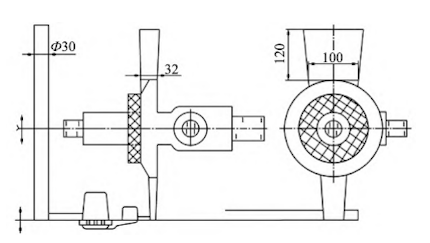
Figure 4 The casting process for the first process improvement plan
Through continuous trial and error, placing a square riser above the flange effectively removed oxidation inclusions in the flange. However, inclusions in other areas persisted, contributing to leakage during pump pressure testing. Minimizing this issue is a key focus for future improvements.
In subsequent improvements, the following measures were implemented:
- In addition to retaining the riser above the flange, a 60 mm × 28 mm × 168 mm riser was added to the top of the T-shaped cylinder to help remove oxidation inclusions.
- A bottom pouring ingate was introduced beneath the T-shaped cylinder, aligned with the new riser, to stabilize the alloy liquid flow.
- The full-circle graphite chiller on the flange was replaced with a half-circle configuration (16 mm thick) positioned on the lower mold.
- The straight runner was kept at 30 mm, and the cross runner was sized at 30 mm × 24 mm. The original sand filter was replaced with a foam ceramic filter (PTW-T-15PPI), sized at 75 mm × 50 mm, to enhance the removal of secondary oxidation inclusions. The cross-sectional area of the cross runner on both sides of the foam ceramic filter was increased by 2.5–3 times to improve permeability.
- The gas content of the alloy liquid was controlled during the smelting process.
As smelting quality stabilized, the vacuum gas content of the alloy liquid was compared with atmospheric pressure test samples. This led to the decision to measure only atmospheric pressure gas content in future tests, bypassing vacuum measurements. Before casting, the alloy liquid was poured into a sample mold and observed after solidification. A slightly concave upper surface (Figure 6) indicated low gas content. If the surface was flat or convex, it indicated high gas content, requiring degassing with a refining agent or argon injection until the surface became concave.
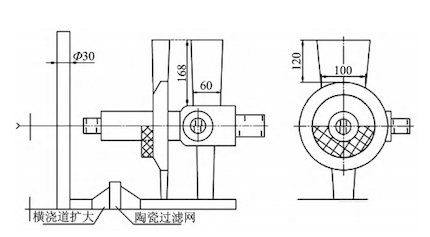
Figure 5 Drawing of the casting process of the final successful solution
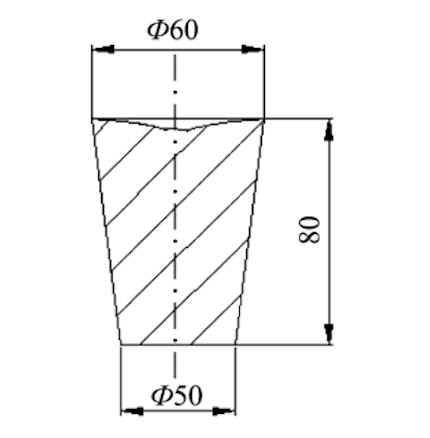
Figure 6 Drawing of atmospheric pressure sample dent detection
The globe valve body casting weighed 9 kg, and the total pouring weight was 19.5 kg, yielding a process yield of 46%. In the third production batch, one of the six products achieved 3.8 MPa under pump pressure, slightly below the 4.0 MPa requirement, while the other five exceeded 6.0 MPa, meeting and surpassing technical specifications. The castings from this batch met all technical requirements.
- Aluminum bronze offers excellent corrosion resistance in seawater and a dense microstructure; however, it is prone to oxidation inclusions that are difficult to remove. These inclusions can remain in the casting, creating leakage pathways during water pressure tests. As a result, casting aluminum bronze valve bodies is more challenging than casting tin bronze or silicon brass.
- In the mold cavity of aluminum bronze valve bodies, the alloy liquid often has difficulty rising uniformly. To address this, a bottom-pouring system should be used, initially closed and then opened, to minimize turbulence and prevent oxidation inclusions, reducing the risk of leakage during the casting process.
- Aluminum bronze ZCuAl9Mn2 has a high affinity for absorbing air, often resulting in gas porosity during the smelting process. This significantly contributes to leakage under pump pressure. Controlling the gas content during smelting is essential. Observing the solidification pattern of the alloy liquid's surface in the sample mold before pouring helps assess gas content.



